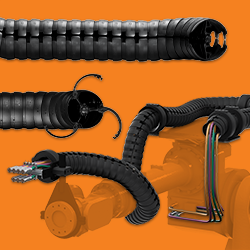18 Questions to Ask Your AGV (Automated Guided Vehicle) Vendor: Part 1
Upcoming Tradeshow, Conference & Exhibition Summary - September - December 2016
The ABC of RPA, Part 7: How will robotics and automation affect my employees?
Stanford's 'Jackrabbot' paves way for social robotics
Siemens' World-record Electric Aircraft Motor Punches Above Its Weight
The ABC of RPA, Part 6: Are robotics and automation in conflict with my IT Department?
University of Surrey presents a roadmap of space robotics
The Third Offset Must Update Asimov's Laws of Robotics
The ABC of RPA, Part 5: What Is the Cost of Automation and How Do I Justify It to the Leadership Team?
Robotics Gone Wild: 8 Animal-Inspired Machines
Cozmo Is an Artificially Intelligent Toy Truck That's Also the Future of Robotics
The New Police Arsenal - Robots
Intuitive Machines Used 3w-powered Unmanned Aerial Vehicle Platform for Flights in Antarctica
The ABC of RPA, Part 4: Choosing the right robotics and automation software to get the job done
The Tiny Radar Chip Revolutionizing Gesture Recognition: Google ATAP's Project Soli
Records 931 to 945 of 1195
First | Previous | Next | Last
Featured Product

